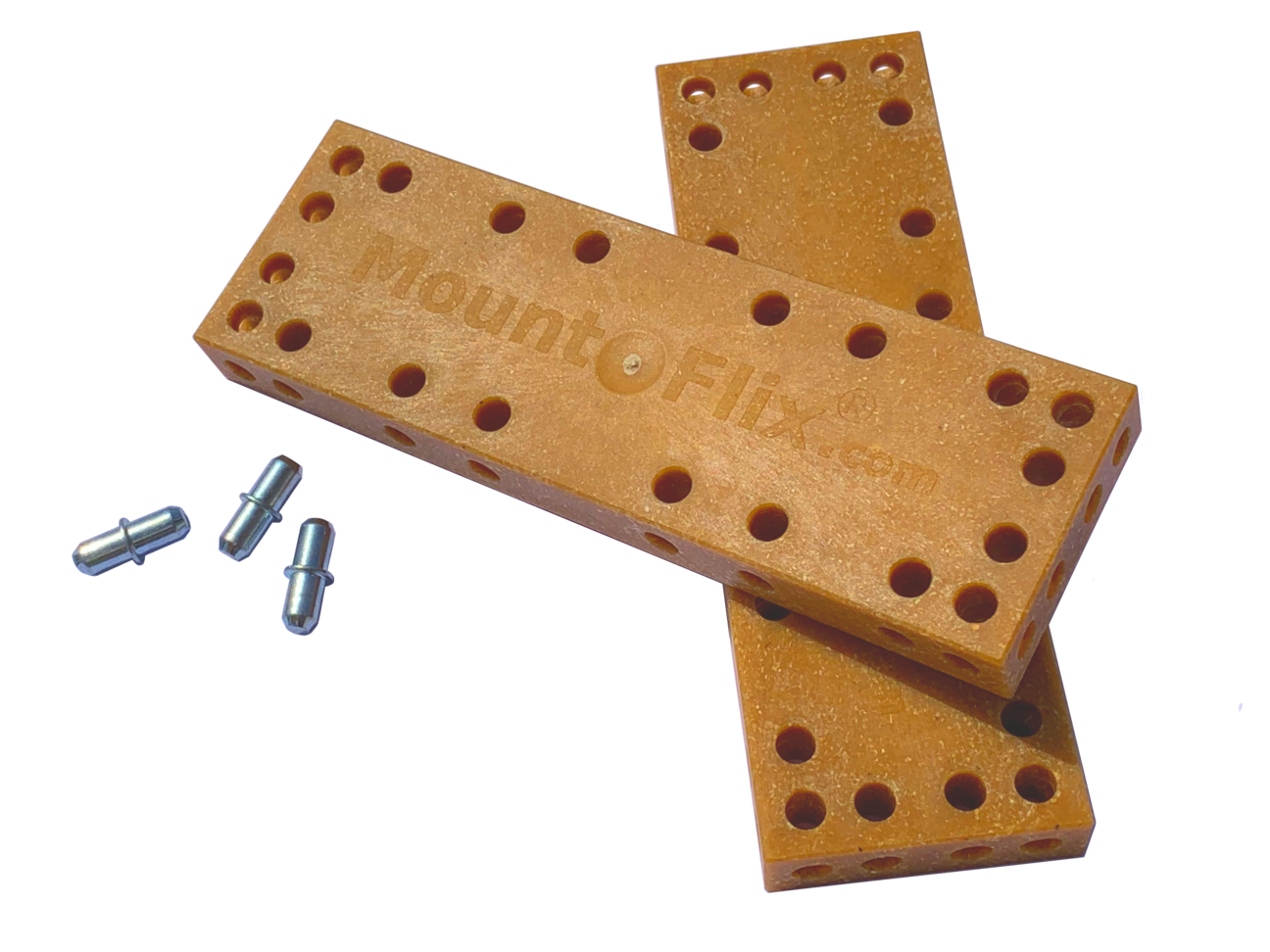
sustainable raw material
Our new environmentally friendly raw material is made from certified predominantly recycled synthetic cork from food bottles.
Before we used food-safe plastic that complies with EU toy standards EN71-T3 and EN71-T9-11, with a very high regional wood fiber content (50%) .
our both raw materials
variant as from 13th Oct. 2025 selectable:
As new innovation we will also offer a sustainable raw material made primarily from recycled wine bottle corks (CO2Eq/kg=0.435), which is comparatively soft and flexible. Chemical properties have been tested by DEKRA in accordance with toy standards. These synthetic wine corks come e.g. from Vinventions. The collection is organised in collaboration with French wine merchants such as Nicolas (>400 shops) and Vignerons Engagés, as well as charitable organisations in France such as France cancer and Eataly branches in Italy. The programme supports cancer research and charitable initiatives to help people with disabilities. The collected corks are ultimately recycled by Beologic into new sustainable raw material granulate.
Pre-sorted, uncontaminated plastic is fed through a shredder. The ‘raw material’ snippets are then melted down to produce new recyclate.
This production process yields fresh, recycled material that can be used to manufacture new products. This circular economy thus has major advantages for people and the environment. The processing of materials reduces the need for disposal. Recyclates thus make an important contribution to conserving resources and saving fossil raw materials.
Unfortunately, with bioplastics, the significant additional cost of raw materials is inevitably reflected in the product price, and comparatively speaking, their technical properties often only allow for compromises.
We sell products made from the older raw material WPC at a lower price.

cradle to cradle
closed loop recycling economy
variant WPC 2022-2025:
- without PVC; without chlorine; without formaldehyde; without plasticizers; without phenol
- stable like wood
- electrically non-conductive
- basic compound without additives
- meets all important standards for toys and food
- reduces the environmental impact of plastics, 1kg of new bioplastic raw material has a CO2 footprint ex German factory of only -86,90g instead of 1700g(PP) as with conventional plastics
- improves the environmental balance as a CO2 reservoir
Harvesting wood from the forest and using it as a building material increases the forest's climate protection effect. This is because the CO2 remains bound in the wood as long as it is used as a material and does not burn or rot. Products made of wood act as carbon reservoirs like a second forest. In the place of the felled trees, forest managers plant new trees, which again actively extract CO2 from the surrounding air. One cubic meter or 500 kg of wood can store 917 kg of CO2.
Our currently used bioplastic can be reused 100% for this product if separated by type in a clean state - this improves the CO2 footprint even more significantly.
Mount-Flix ® uses bioplastic, because due to the numerous drill holes a solid wood product is currently unfortunately still many times more expensive to manufacture and the connecting pins can cause a breakout with the solid wood or multiplex fiber to the nearby component edge in case of tolerances between the drill holes.
Accredited testing laboratories have examined the accessories and confirmed that they meet or fall below the legal limits. Magnets, pliers and connecting pins were tested as follows: Mechanical and physical properties according to EN71 Part 1, migration of certain elements according to EN71 Part 3, nickel permissibility (EN1811). In the case of plastics from accessories, the following parameters, among others, were considered in accordance with REACH: Short-chain chlorinated kerosenes (SCCP), phthalates, polyaromatic hydrocarbons (PAH), cadmium (EN12498), alkylphenol and -ethoxylates; and flammability according to EN71 Part 2.
- - -
We can claim 50% by mass for our WPC (wood plastic compound) because it corresponds to the weight percentage of the WPC compound.
Percentage bio-based carbon content, on the other hand, is something else. Wood consists not only of carbon, but also of other mass molecules with an average distribution as follows: 50% carbon, 43% oxygen, 6% hydrogen, 1% nitrogen and other elements.
As a plastic, a polypropylene (PP) binding carrier material is added to the WPC. With the sum formula of C3H6 of polyproplyene, one can therefore assume 33% carbon and 66% hydrogen, as well as other elements in traces and since 2023, depending on the batch, occasionally till ≤3% of TPE-typical additives.
- - -
Regarding wood fiber-filled materials, the 16th amendment to Regulation (EU) No. 10/2011 (Regulation on plastics intended to come into contact with food) was published and has been in force since July 2023. The previous entry FCM 96 “Wood flour and fibers, untreated” has been deleted.”
In order to retain the food contact authorization of a substance (wood), the EU authority has ordered new tests (pesticides, fungi and bacteria, toxicology...). WPCs without new approval may no longer be re-produced as “food-safe” from February 1, 2025.
The previous WPC contains not only wood shavings of one wood species, but a mixture of different wood species such as mainly spruce and fir as raw materials from the planing mills. The mixture cannot be permanently fixed (e.g. 20% spruce and 80% fir), as the proportions vary depending on the processing of the planing mills and therefore an application to the European Food Safety Authority EFSA will no longer be considered in future. In this case, it would be more expensive to use only single-variety logs, which we would have to plane and then grind ourselves in order to obtain any food approval. However, this goes against our whole basic idea of using secondary raw materials and upcycling. Most wood fiber manufacturers and also WPC producers cannot economically comply with this new legislation.

